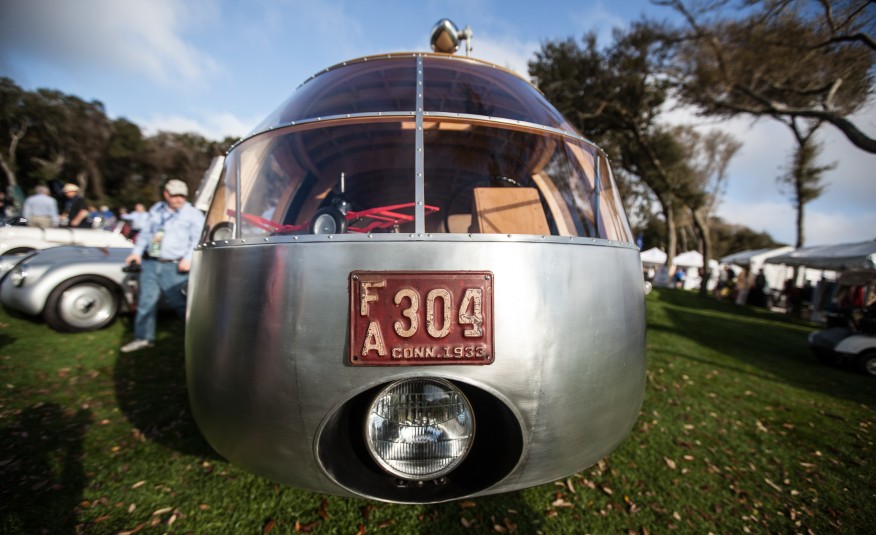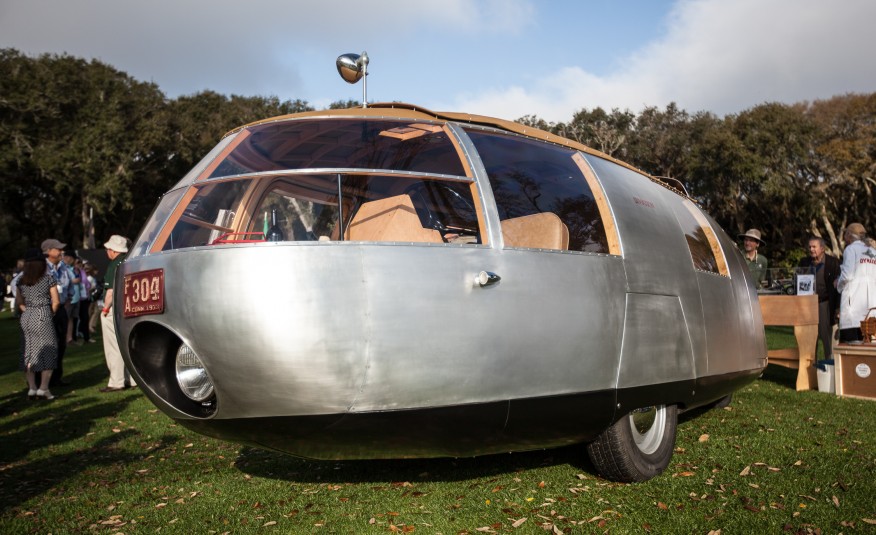
Any aficionado of oddball and dead-end automobiles would surely agree with Jeff Lane's statement. The difference between Lane and many other fans of automotive esoterica is that Lane has fistfuls of wherewithal. His eponymous Lane Motor Museum, housed in a former bakery outside Nashville, Tennessee, showcases a collection of 400 vehicles from storied brands like Zündapp, Tatra, and Borgward. Of course the joint requires a Dymaxion!
Though the Dymaxion made a lasting impression on a certain subset of car nerds, its development represents only a tiny slice of R. Buckminster Fuller's career. Lane notes, "They started in '33 and by the end of '34, they were done. So it was like a two-year period. The first car got built in six or eight months. It was done quickly, so there probably wasn't a lot of refinement." The project ground to a halt after the first car suffered a crash in Chicago that resulted in the death of a journalist. According to Lane, the scuttlebutt is that a Chicago politician was attempting to take a photo of the Dymaxion from another vehicle when everything went wrong. Due to the distracted driver's position of power, his culpability was swept under the rug.


The second vehicle, as Lane noted above, is in the collection of the National Auto Museum in Reno, while the third seems to have been scrapped sometime in the 1950s. Lane's group had the chassis for this car built in Pennsylvania, with some additional work at its own facility in Tennessee. The chassis was then sent to the Czech Republic, where Mirko Hrazdira built the wooden body support structure. Ecorra, a Czech concern that specializes in the restoration of aerodynamic Tatras (and which restored the Lane Museum Tatra entered into last year's Pebble Beach concours), skinned the Dymaxion in aluminum. The car arrived back in the States on February 1, and by mid-March it was on a 650-mile trek from Nashville to Amelia Island.
Motivated by a 1933 Ford flathead V-8, Lane and company took the backroads from Tennessee to northeast Florida, covering about 200 miles per day. "We didn't really have any problems," says Lane. "On a smooth road, it's pretty good. What it really doesn't like is a crowned road, because the back wheel walks on this side, [then] walks on that side."
Ah yes, the mighty conundrum of the three-wheeled car. Avoid a bump with the front tire on a motorcycle and you're practically guaranteed to miss it with the rear. Position a pothole between the front wheels of your four-wheeler and the car will straddle either side. The three-wheeled vehicle carries the distinct disadvantage of athird track, which makes aiming the thing around road hazards a much dicier proposition. What's more,unlike a Morgan, the Dymaxion is driven by the front axle and steered via the rear wheel—a setup Fuller was on the verge of abandoning. Lane explains, "Bucky said that if they hadn't run out of money, that the next car was going to be front-steer."
Lane continues, "Because the propeller-powered car we [also] have is rear-steer, for me, it's not so bad. As you're driving along and the back wiggles, you don't wanna overcorrect. It's like towing a trailer. The other thing is, when you're pulling out onto a two-lane road, you have to turn the wheel first, before you move. Then as you come out, you need to turn back, because if you don't do that, the rear end's going to swing into oncoming traffic. Every time somebody drives it initially, it's like they're drunk. But once you get used to it, it's not so bad."
The world never had time to get used to the Dymaxion, but a combination of Fuller's status as an iconoclastic American thinker and the Zeppelin + Airstream look of the thing left a lasting impression on those appreciative of automotive possibility. Lord knows that we very nearly soiled our trousers when we saw the thing drive by.

Комментариев нет:
Отправить комментарий